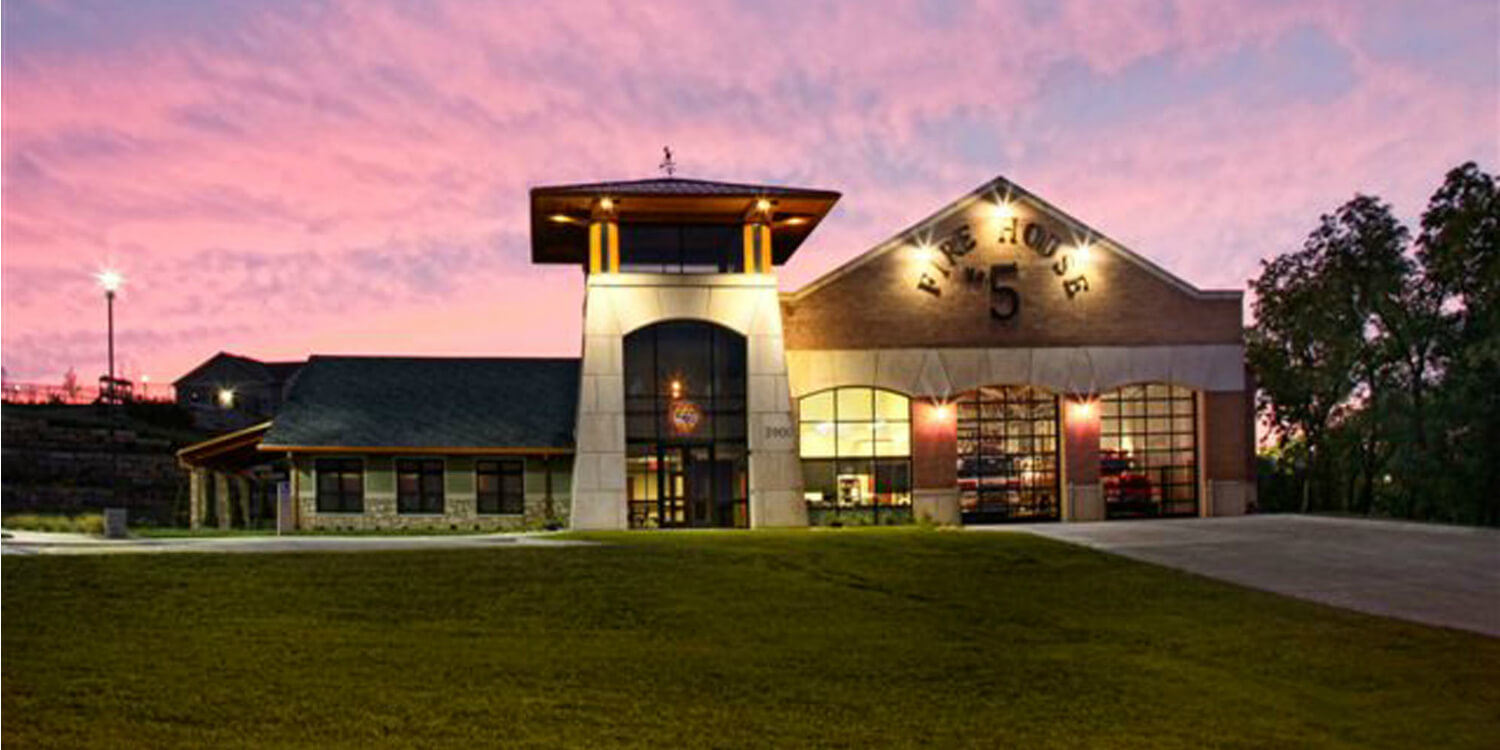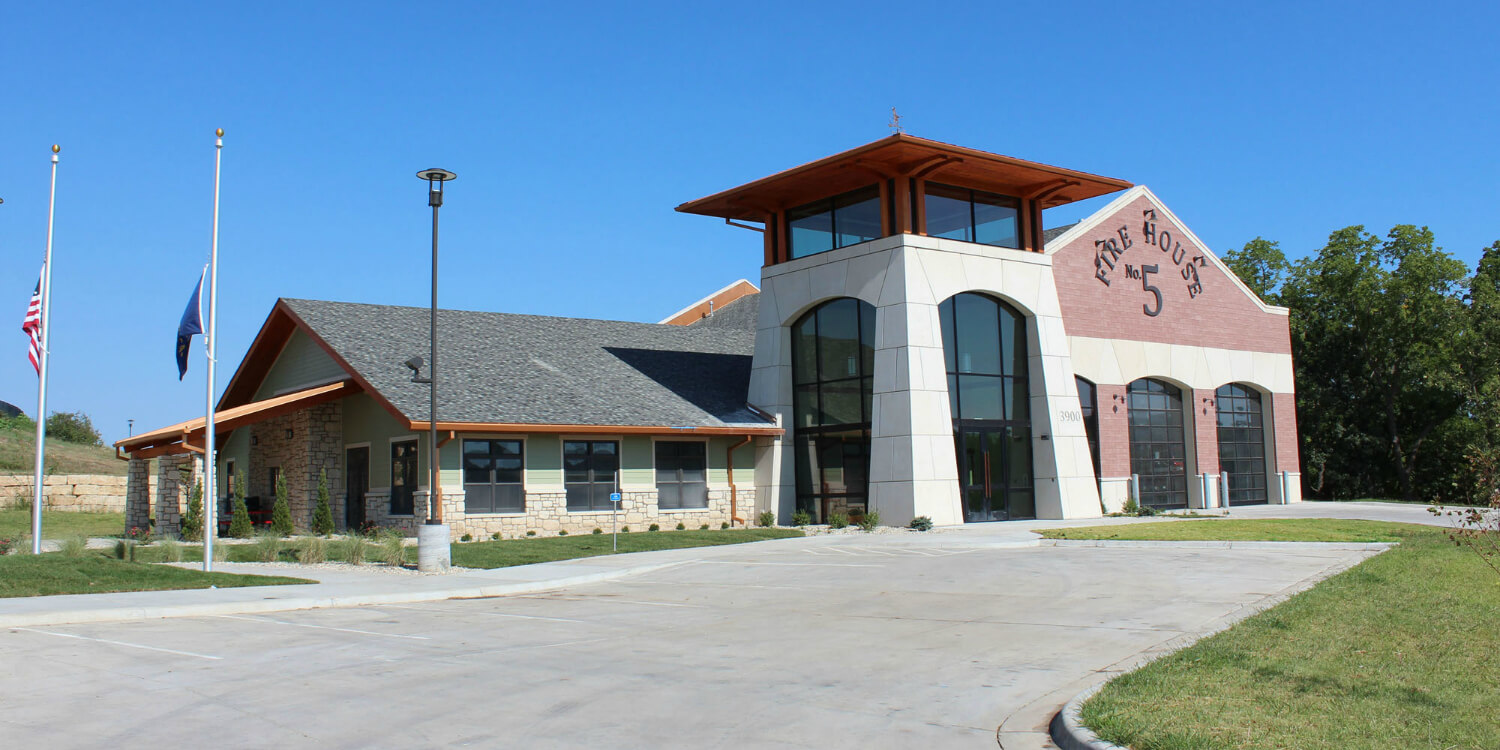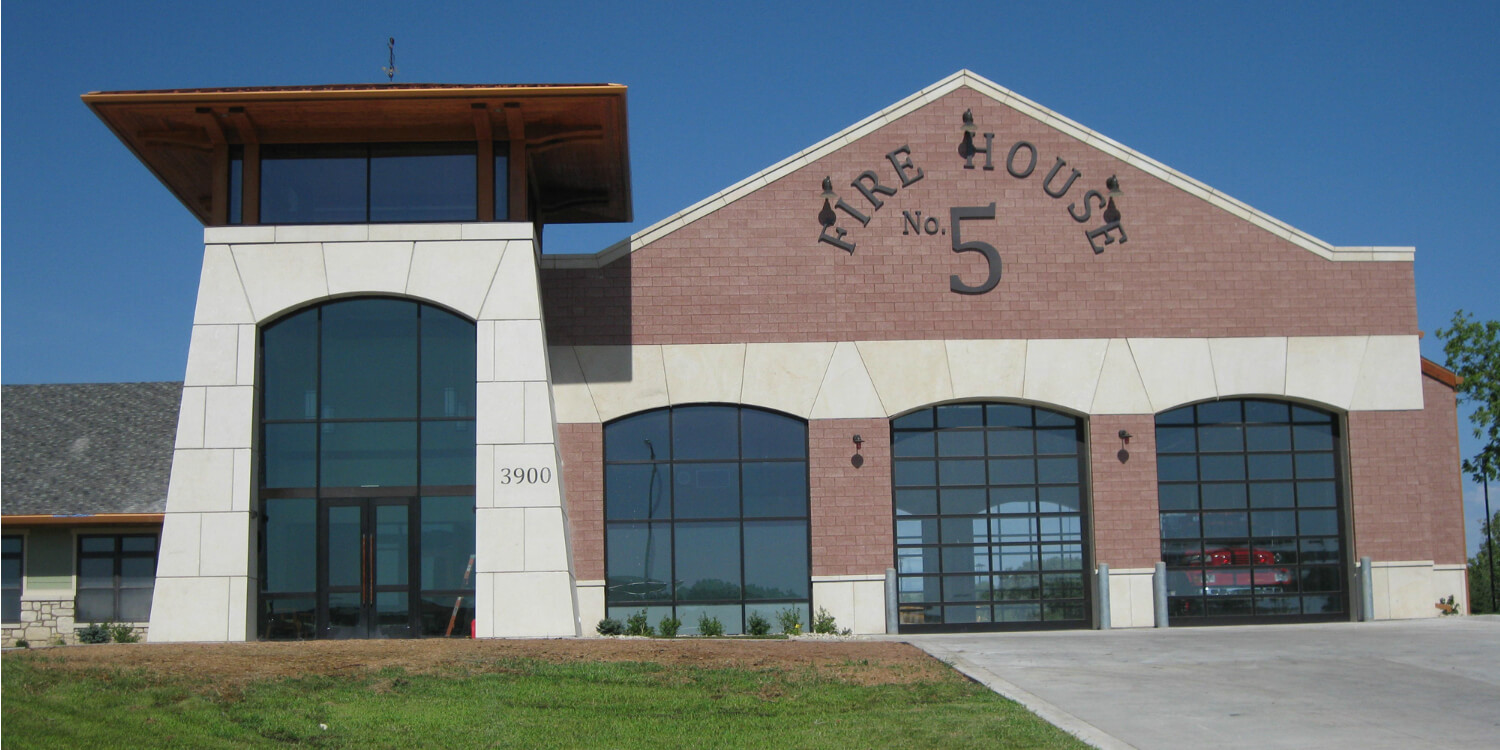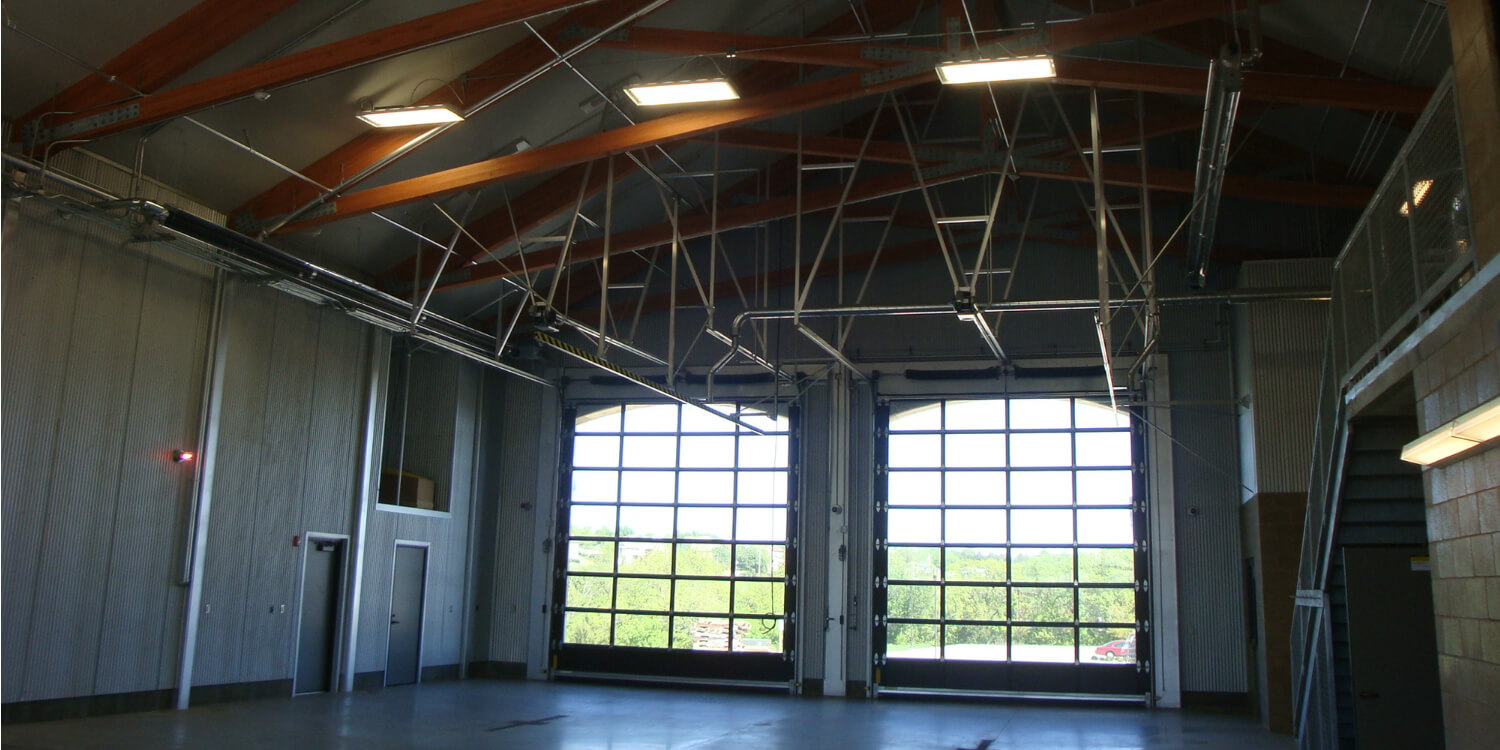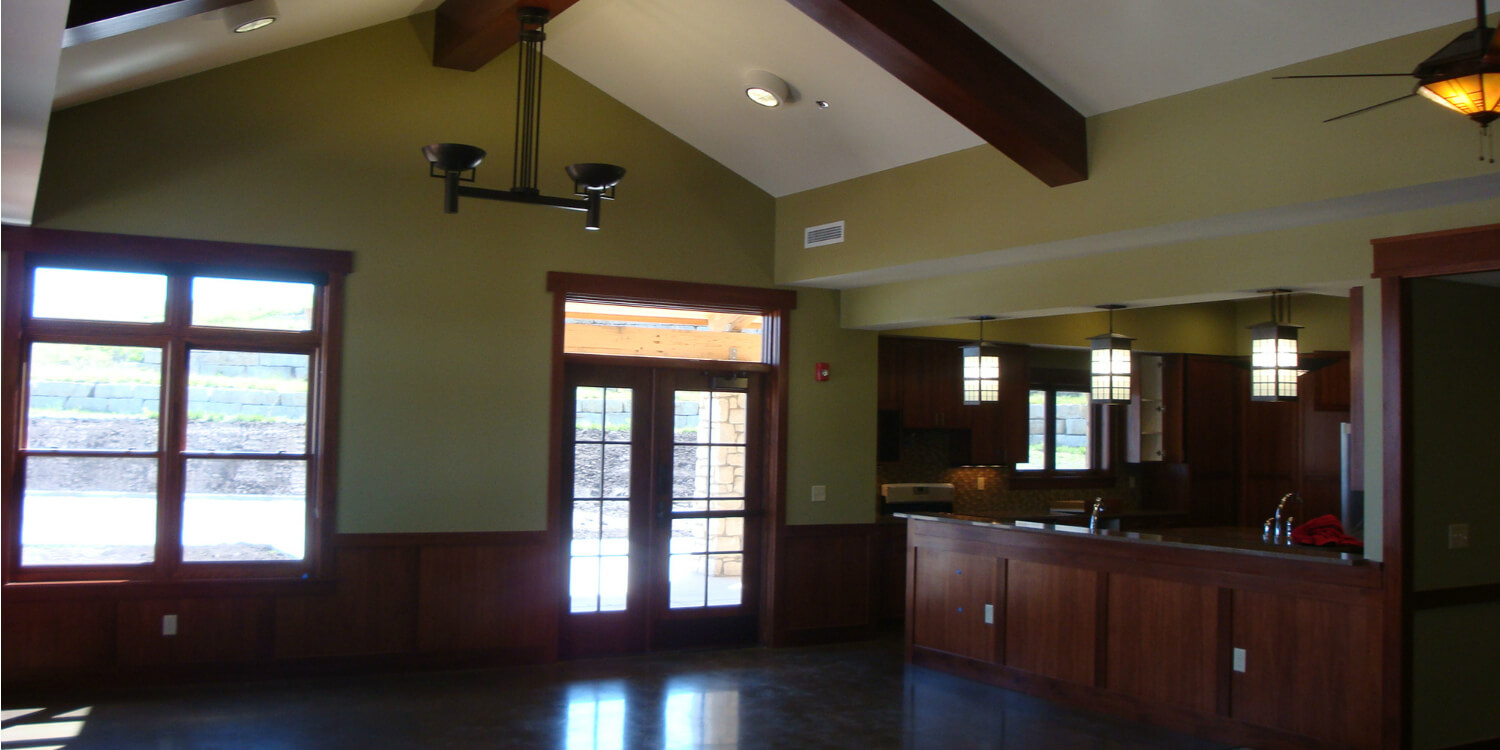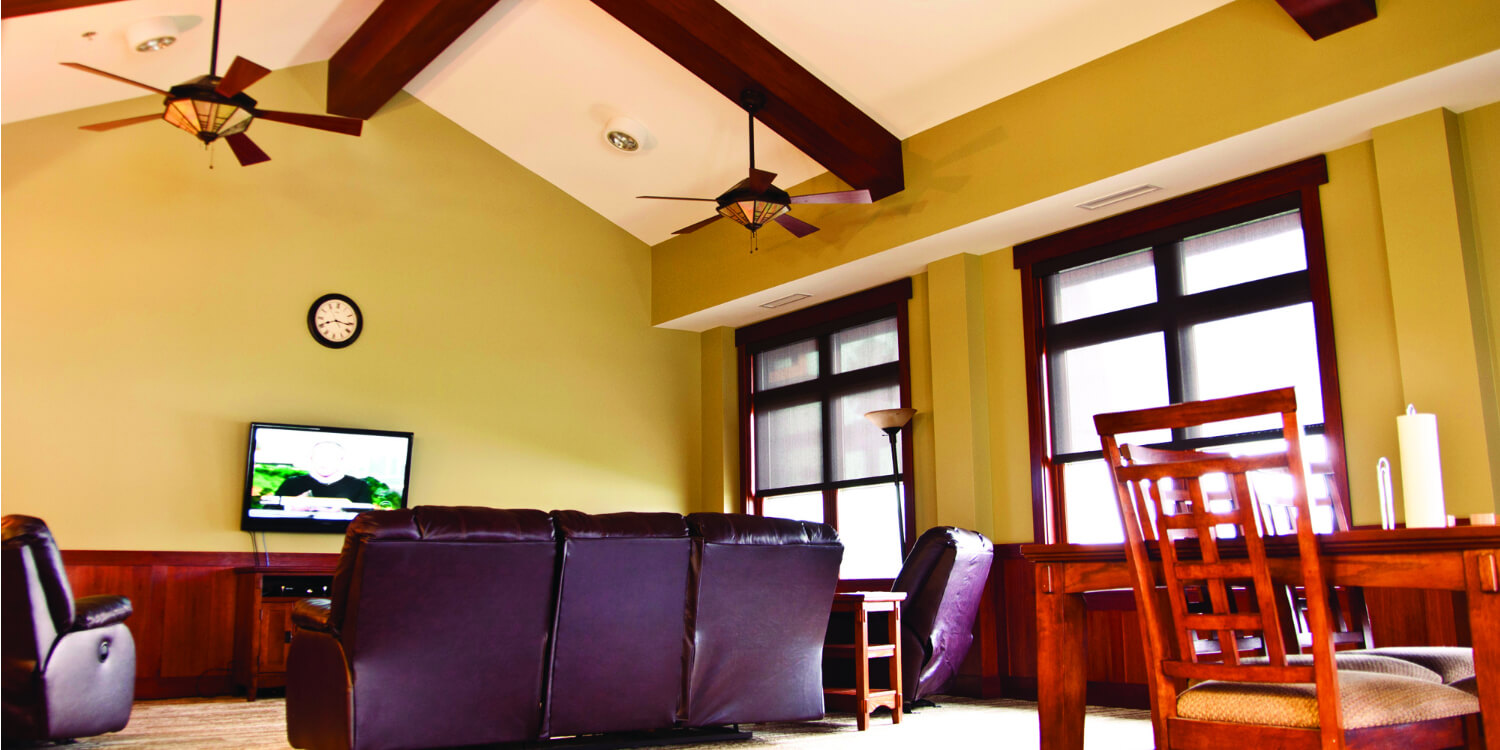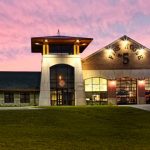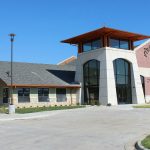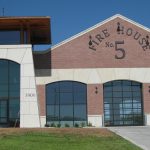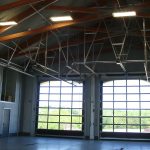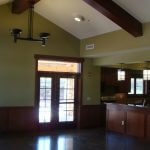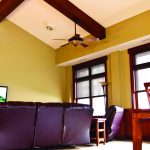Manhattan Fire Station No. 5
Manhattan, KS


Station 5 was built in response to growth on the City’s Western edge and serves as the regional hazardous materials response team for the State Fire Marshal’s Office. The Station was designed to respond aesthetically to the prominent master-planned golf course community where it is located. Many of the material selections and building forms are designed to reflect the quality of the buildings and upscale homes surrounding it.
The interior was designed to be warm and comfortable for the firefighters who live there. A trendy day-room provides living space for crew members, along with a state-of-the-art kitchen, sleeping quarters for six, three private bathrooms, an exercise room, laundry equipment and personal storage areas. Other, more utilitarian components of the station include a decontamination room, a compressor room, a tool shop, an EMS storage room, and a storage mezzanine and outside storage rooms. All with direct access to the apparatus bays. The building is also protected by a diesel generator backup-power system and the station has a sprinkler system. Additionally, Station 5 was designed to allow for expansion of the apparatus bays as well as the bunk rooms in the future.
Station 5 was designed with sustainability in mind. The main structure is a post and beam system with an envelope of structural insulated panels, creating an extremely tight, thermally efficient envelope. The building also incorporates efficient lighting strategies and controls, as well as a geothermal HVAC system.
Designed in collaboration with Action Pact Design (formerly Anderson-Knight Architects). SCN-Architects provided programming and schematic design consultation.
Programming and Schematic Design Consulting Public Safety Architect
Prev
Next
11,400 SF
Station 5 was built in response to growth on the City’s Western edge and serves as the regional hazardous materials response team for the State Fire Marshal’s Office. The Station was designed to respond aesthetically to the prominent master-planned golf course community where it is located. Many of the material selections and building forms are designed to reflect the quality of the buildings and upscale homes surrounding it.
The interior was designed to be warm and comfortable for the firefighters who live there. A trendy day-room provides living space for crew members, along with a state-of-the-art kitchen, sleeping quarters for six, three private bathrooms, an exercise room, laundry equipment and personal storage areas. Other, more utilitarian components of the station include a decontamination room, a compressor room, a tool shop, an EMS storage room, and a storage mezzanine and outside storage rooms. All with direct access to the apparatus bays. The building is also protected by a diesel generator backup-power system and the station has a sprinkler system. Additionally, Station 5 was designed to allow for expansion of the apparatus bays as well as the bunk rooms in the future.
Station 5 was designed with sustainability in mind. The main structure is a post and beam system with an envelope of structural insulated panels, creating an extremely tight, thermally efficient envelope. The building also incorporates efficient lighting strategies and controls, as well as a geothermal HVAC system.
Designed in collaboration with Action Pact Design (formerly Anderson-Knight Architects). SCN-Architects provided programming and schematic design consultation.
Programming and Schematic Design Consulting Public Safety Architect

